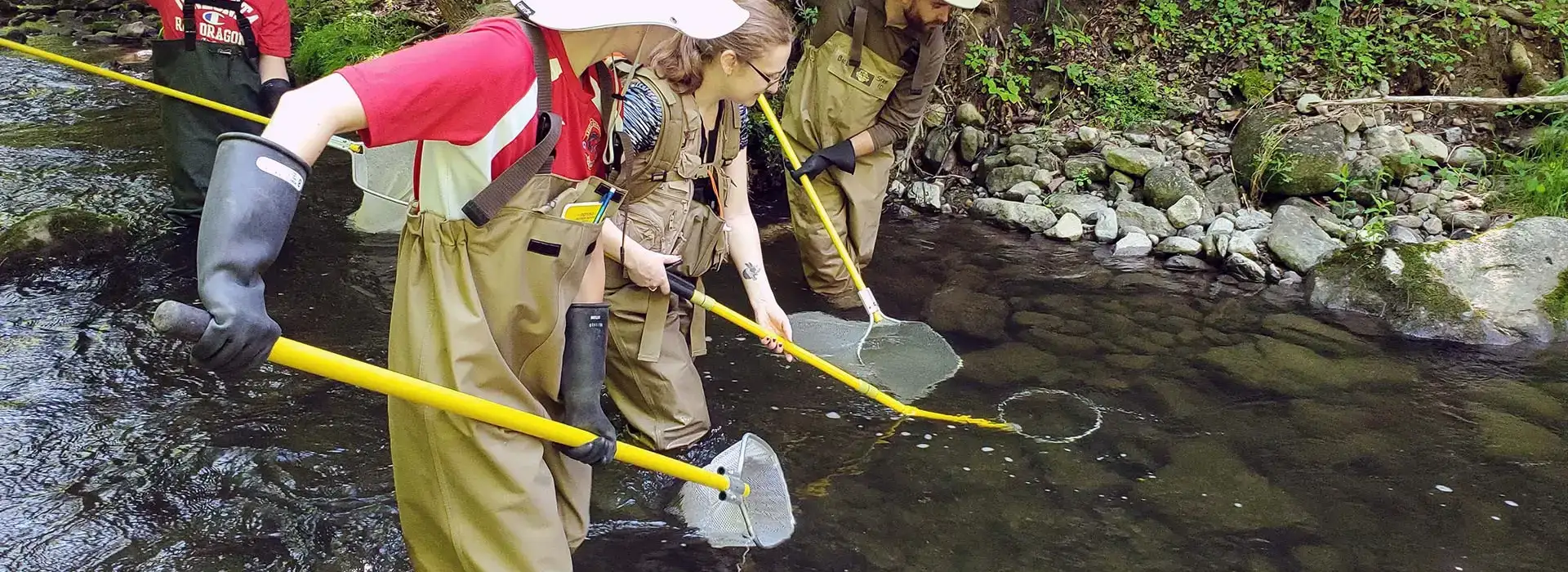Research and Field Work
Many biology courses have an immersive field research component on campus, in nearby streams and lakes, and at our Biological Field Station facility in Cooperstown. Field-based courses are 16-day, 4-credit experiences where you can focus on a single subject and immerse yourself in the content. Topics range from botany to entomology.
Students can conduct independent research guided by a faculty member, or join a faculty research lab group, which will meet regularly to conduct research in a faculty member’s area of expertise. Students form close bonds and some even become co-authors on peer-reviewed academic journal publications about new discoveries.
Global Connections
The faculty and staff of the Biology Department at SUNY Oneonta come from various backgrounds and maintain their connections to different cultures and languages through education, research and outreach activities. Equitable global collaboration is essential for the advancement of our collective scientific knowledge, and we strive to guide our students to gain skills and experiences to become a productive member of a global STEM community that respects scientific integrity, justice, equity, diversity and inclusion.
Examples include Collaborative Online International Learning (COIL) activities in classes, credit-earning faculty-led study abroad programs, international exchange programs, international research conferences, and interacting with guest researchers in research labs and at seminars and symposia hosted by the Biology Department.
Study at Tokyo Metropolitan University in Japan
Immerse yourself in another culture while completing some of your upper-level biology elective courses through our exchange program with Tokyo Metropolitan University in Japan. Study during the spring semester or a full academic year.
Biology majors who have completed introductory core courses in biology can earn credits toward the 3000/4000 level BIOL electives by completion of equivalent biology courses at Tokyo Metropolitan University, taught in English. Learn more about the exchange program.
Collaborative Online International Learning (COIL)
Undergraduate courses taught by Dr. Kiyoko Yokota, Associate Professor of Biology, usually have Collaborative Online International Learning (COIL) activities within their regular coursework. Oneonta biology students will engage with biology students and faculty at Tokyo Metropolitan University in Japan during class discussions and collaborative projects.
Faculty-led Field Courses Abroad
Several biology faculty members have led short-term field courses abroad, giving students the chance to immerse themselves in another culture while also getting hands-on field experience with species or topics they wouldn’t find in the United States. Recent destinations have included Peru, where Dr. Florian Reyda immersed students in field research on tropical floral, fauna and animal species, and Japan, where students learned about conservation and sustainability efforts around the world with biology faculty Kiyoko Yokota and Paul Lord.
Scholarships
- Biology Department Scholarship, awarded to Biology majors in their sophomore year whose first-year biology grade-point average was 3.5 or higher.
- John G. New Scholarship, awarded to Biology or Environmental Science majors with demonstrated academic achievement, interest in research, and who advocate that economic progress be compatible with a quality environment.
Key Links
Contact the Biology Department
122 Perna Science Building
108 Ravine Parkway
Oneonta, NY 13820
United States
